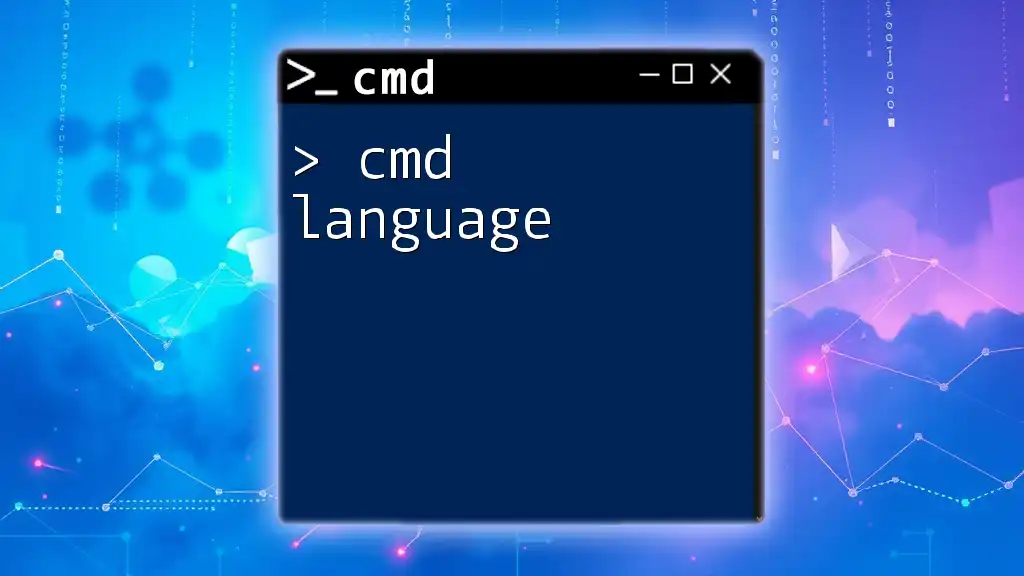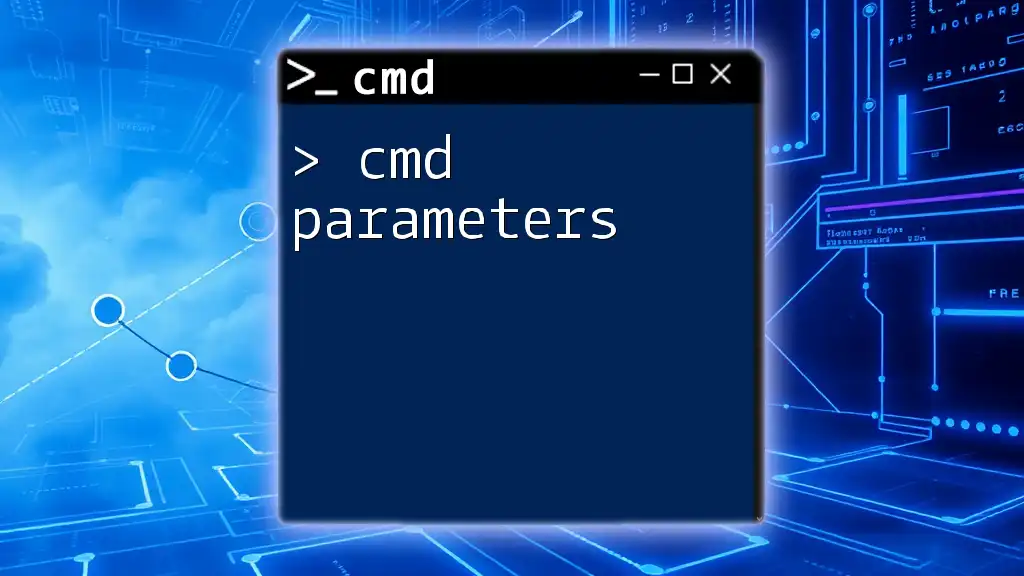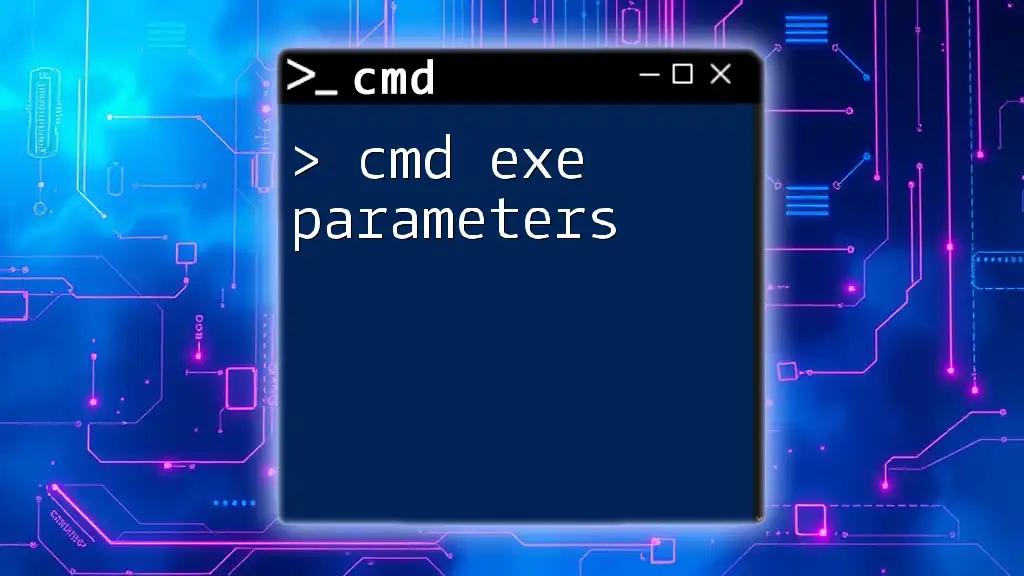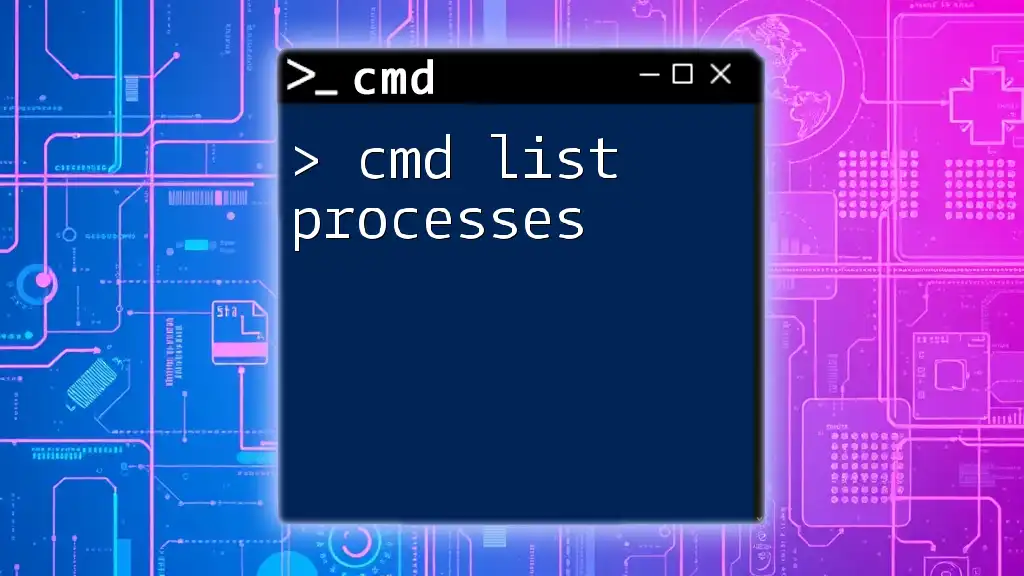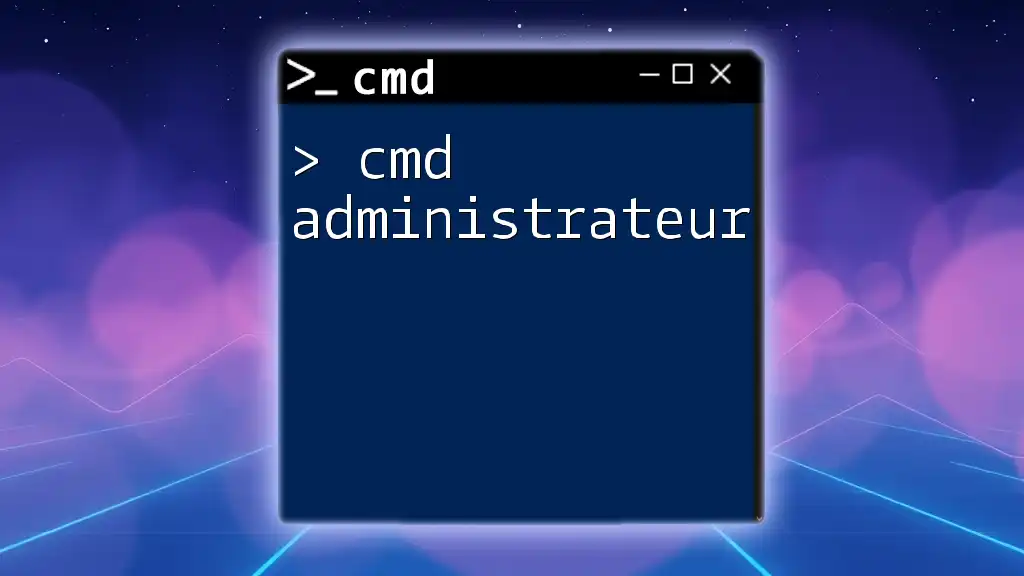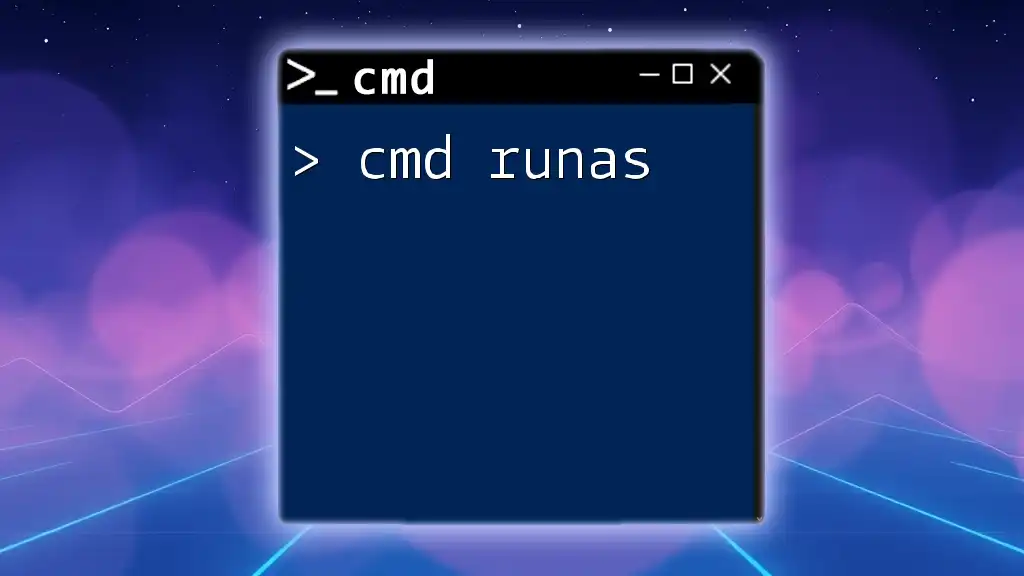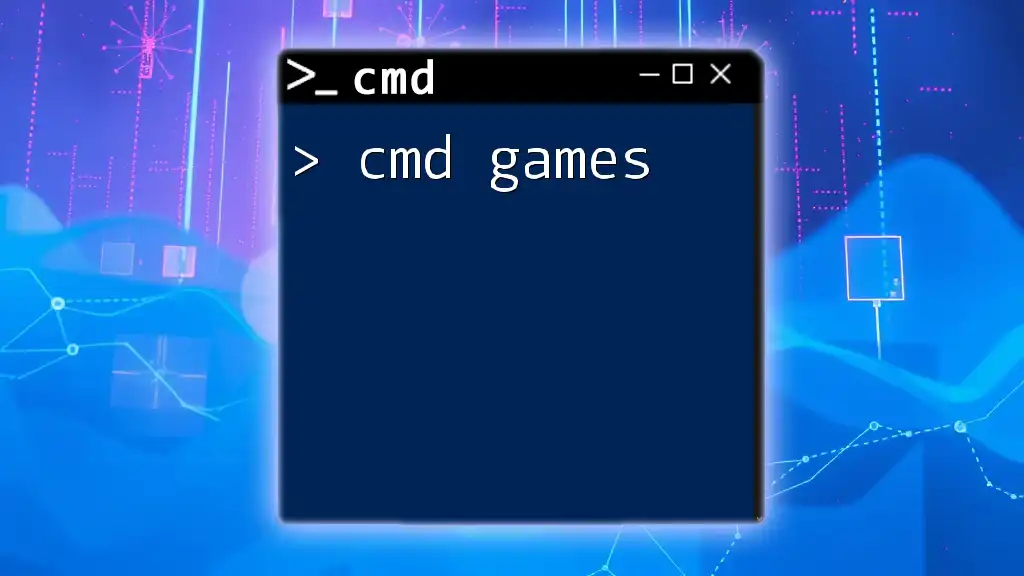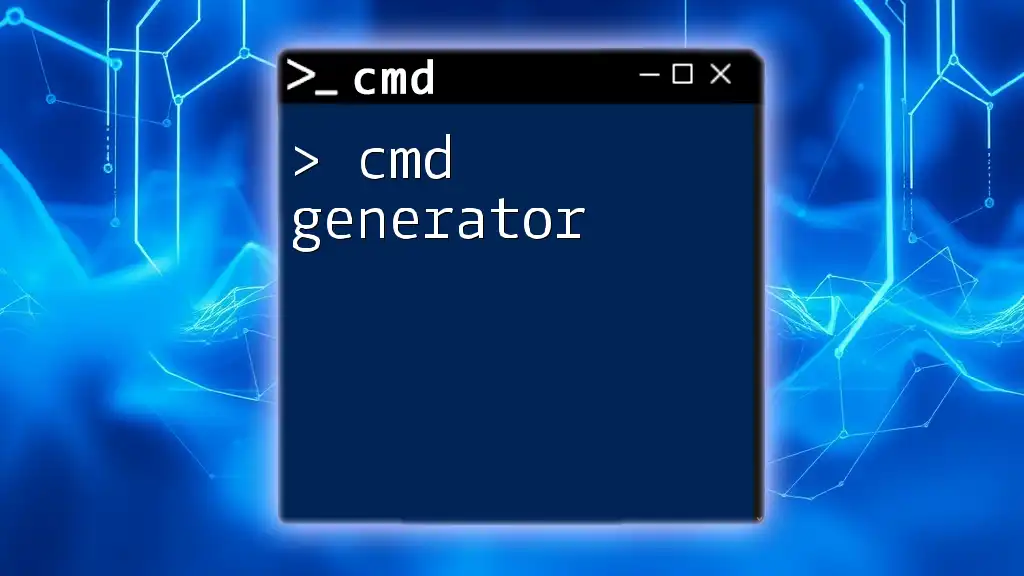CMD line arguments are inputs passed to a command-line program, allowing users to specify options or parameters for execution.
Here's a code snippet demonstrating the use of line arguments in a simple batch script:
@echo off
echo Hello, %1!
To run this script and pass a name as an argument, you would use:
script.bat John
This would output: "Hello, John!"
Understanding CMD Line Arguments
What Are Command-Line Arguments?
CMD line arguments are parameters that are passed to command-line executables, enabling users to control the behavior of these commands. They follow the command itself and can modify its operation, allowing you to specify files, settings, or other options.
For instance, you can use CMD line arguments to tell a command which file to operate on or what action to perform. Understanding how to use these arguments is crucial for effectively utilizing CMD.
Difference Between Command-Line Arguments and Switches
It's important to distinguish between command-line arguments and switches:
-
Command-Line Arguments: These are the actual inputs that come after the command and tell it what to do. For example, in the command `del file.txt`, `file.txt` is the argument.
-
Switches: These are optional modifiers that alter the way a command behaves. They usually begin with a `/` or `-`. For example, in `dir /w`, `/w` is a switch that lists contents in wide format.

How to Use CMD Line Arguments
Basic Structure of CMD Commands
The basic structure of nearly every CMD command can be represented as:
command [options] [arguments]
- `command`: This is the command you want to execute.
- `[options]`: These are optional switches that modify the command's behavior.
- `[arguments]`: These are the values or files that the command operates on.
Passing Arguments to Commands
Ordering is crucial when passing arguments to a command. Arguments must be provided in the sequence that the command expects; otherwise, you may encounter errors or unexpected results.
For example, to list the contents of a specific directory, you would use:
dir C:\Users
Here, `C:\Users` is the argument specifying the target directory.
Using Quotation Marks in Arguments
When dealing with file or folder names that contain spaces, it is essential to enclose those names in quotation marks. This prevents the command interpreter from misreading the input.
Consider the command to delete a file in a directory with spaces in its name:
del "C:\My Documents\file.txt"
In this case, quoting the path ensures it is interpreted as a single argument.
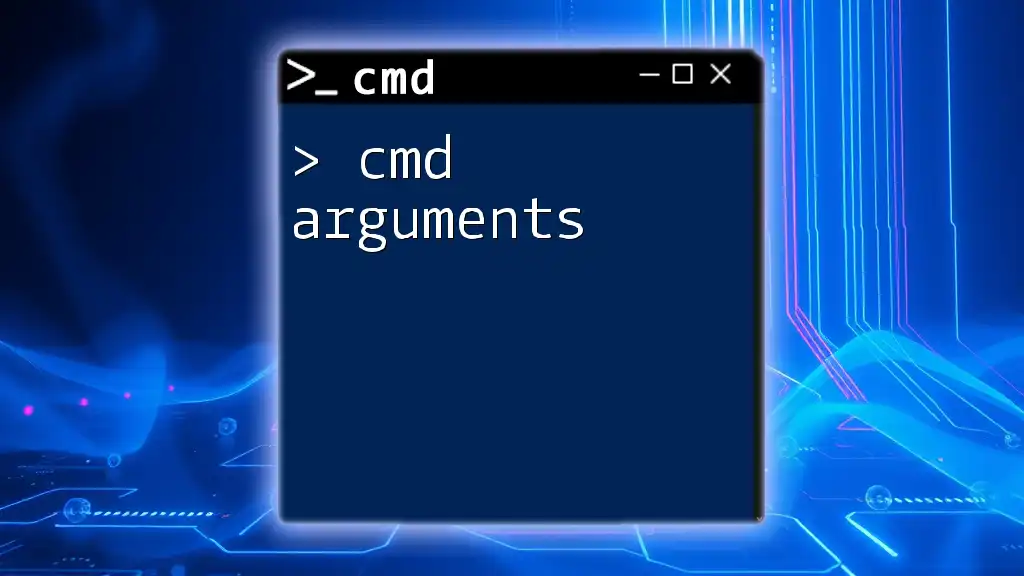
Common CMD Commands with Line Arguments
File and Directory Commands
DIR: This command is used to list the contents of a directory. The following example lists directory contents based on certain attributes:
dir /A /S "C:\My Folder"
In this instance:
- `/A` displays files with specified attributes.
- `/S` lists all files in the directory and its subdirectories.
COPY: This command allows you to copy files from one location to another and relies on the correct order of source and destination:
copy source.txt "C:\Backup\copy.txt"
This command copies `source.txt` to the `C:\Backup\` directory and renames it `copy.txt`.
Networking Commands
PING: Used to test the network connection to a host. The command below sends continuous ping requests to Google:
ping -t google.com
Here, `-t` allows the command to ping endlessly until stopped, making it useful for troubleshooting connectivity issues.
IPCONFIG: This command displays the current network configuration, providing insight into your network settings:
ipconfig /all
The `/all` switch reveals detailed information about all adapters, offering valuable diagnostics.
System Management Commands
TASKLIST: This command shows all running processes on your system, providing insight into system activity:
tasklist /FI "STATUS eq RUNNING"
In this example, `/FI` introduces a filter, displaying only processes that are currently running, which is helpful for monitoring system performance.
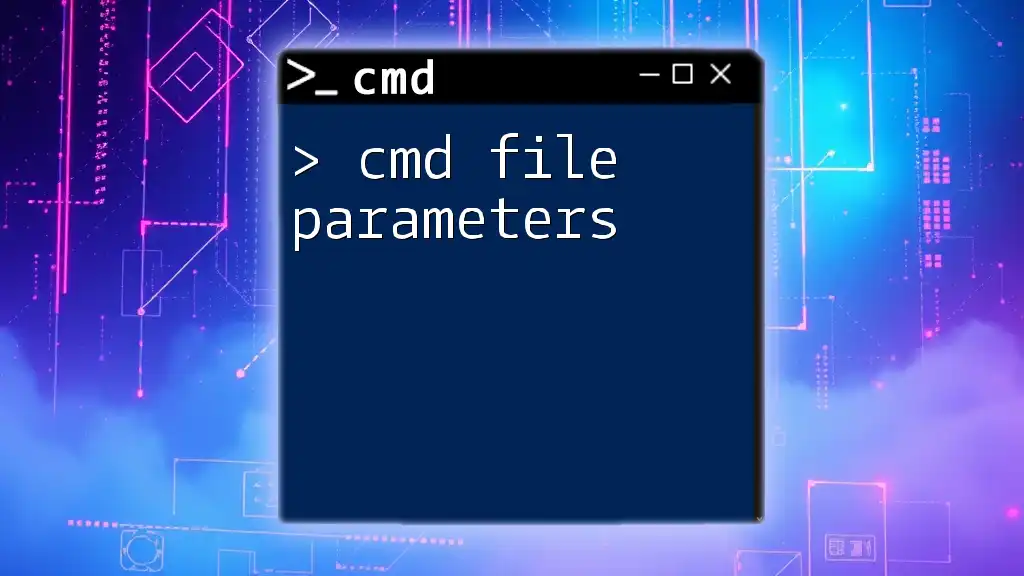
Advanced Usage of CMD Line Arguments
Batch Scripting with Command-Line Arguments
Batch files allow you to automate CMD commands. You can pass arguments to a batch file when executing it, enhancing its functionality. For instance, consider a simple batch script:
@echo off
echo Hello, %1
This script prints "Hello," followed by whatever argument is passed to it. To execute the batch file and pass an argument, you would use:
mybatch.bat World
This would output: `Hello, World`.
Error Handling with Command-Line Arguments
Working with CMD line arguments requires attention to detail. Errors commonly arise when arguments are missing or incorrectly formatted. It's helpful to anticipate potential errors and handle them via checks in scripts or commands. For example, ensure that mandatory files exist before performing operations on them.
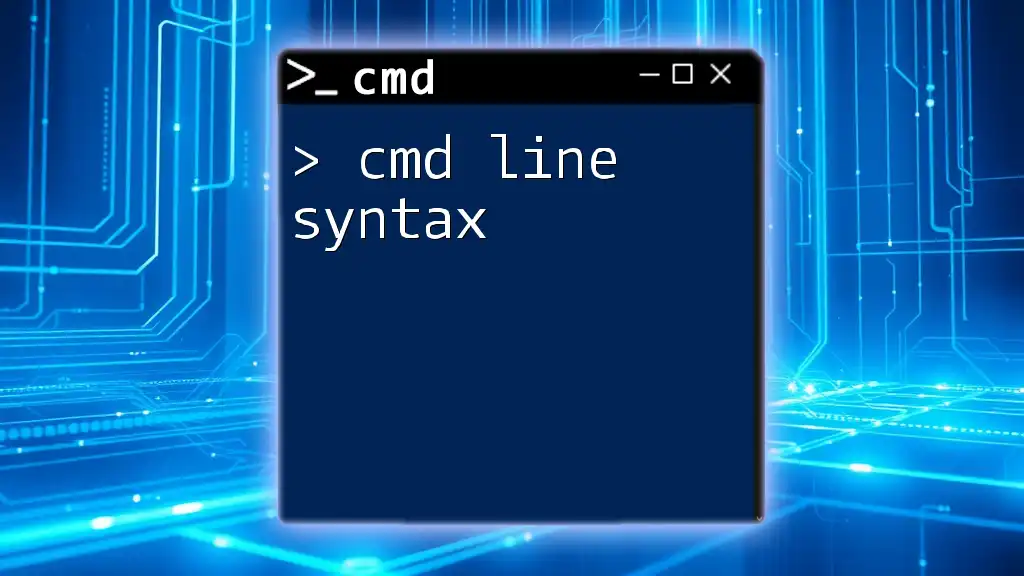
Best Practices for Using CMD Line Arguments
Clear and Descriptive Arguments
When passing arguments, clarity is key. Using descriptive names for files and folders helps avoid confusion about what command is being executed and what files are being manipulated. This practice reduces the likelihood of errors and streamlines your workflow.
Documentation and Help
To enhance your understanding and usage of CMD commands, you can access built-in help. This can be done by appending `/` followed by a question mark to most commands:
command /?
Furthermore, the `HELP` command lists available commands and their usage, making it an excellent resource for learning and reference.
Safety Precautions
Certain CMD commands can alter or delete critical files. Always make sure to back up important data before running potentially destructive commands. Moreover, understanding the command you’re executing and its implications is essential for minimizing risks.
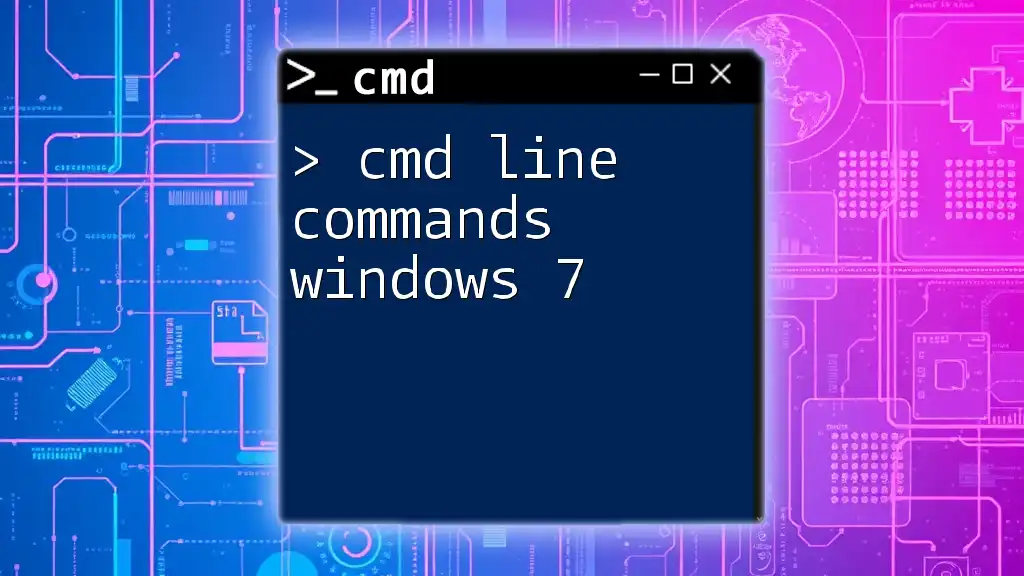
Conclusion
CMD line arguments are a powerful feature that enhances the functionality of command-line instructions, enabling users to tailor commands to their specific needs. By mastering CMD line arguments, you can streamline your workflow, automate tasks, and optimize system management. As you explore these commands, practice using various arguments and switches to deepen your understanding. Engage with our community to continue your journey into the world of CMD and become proficient in command-line operations.







